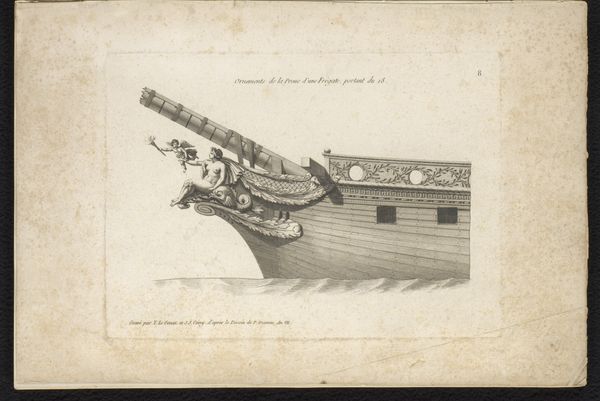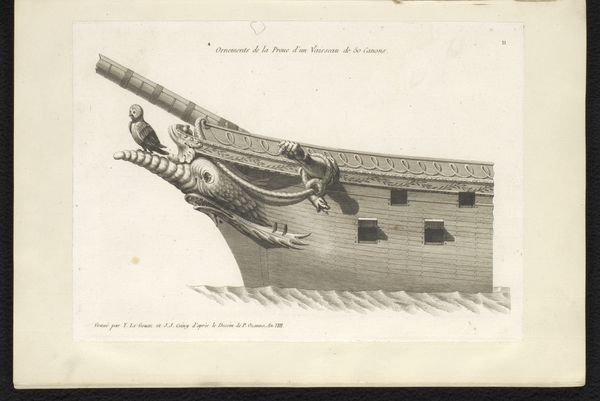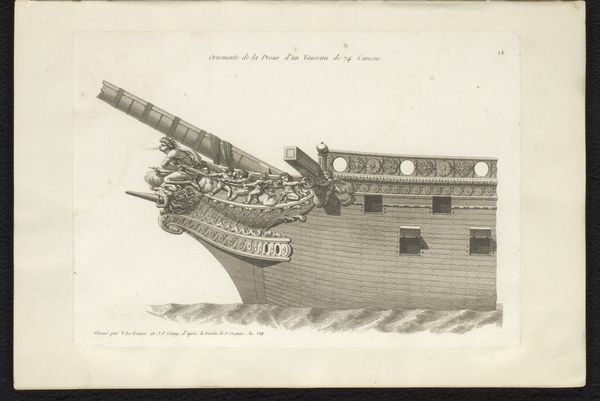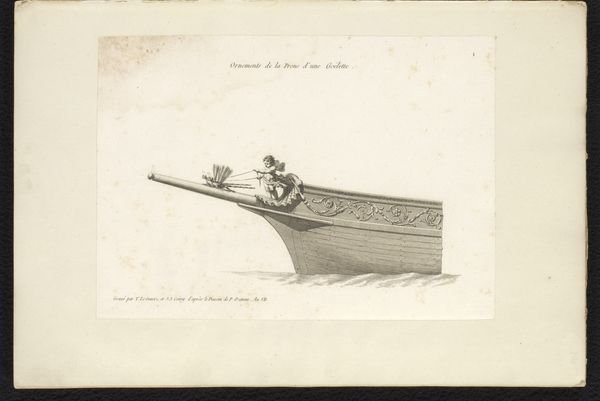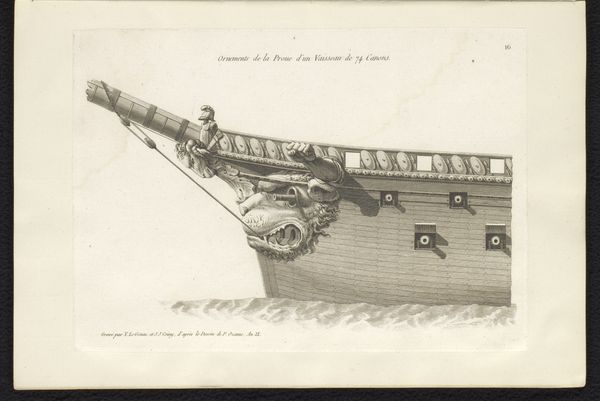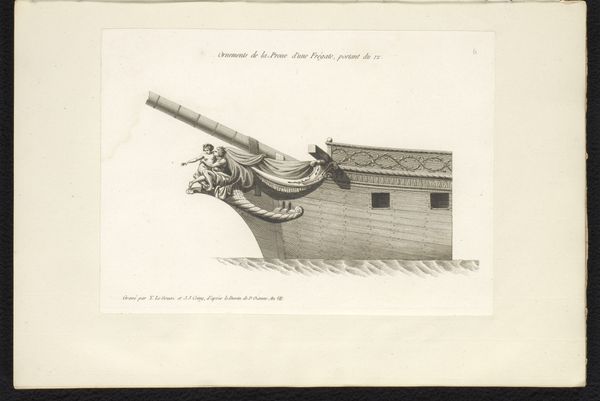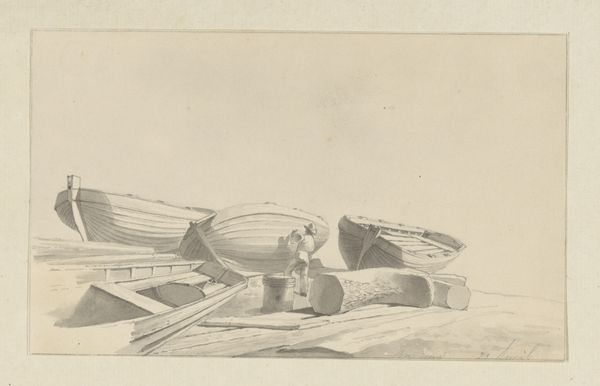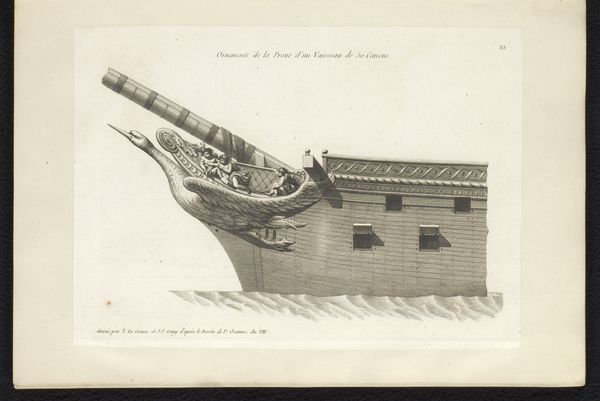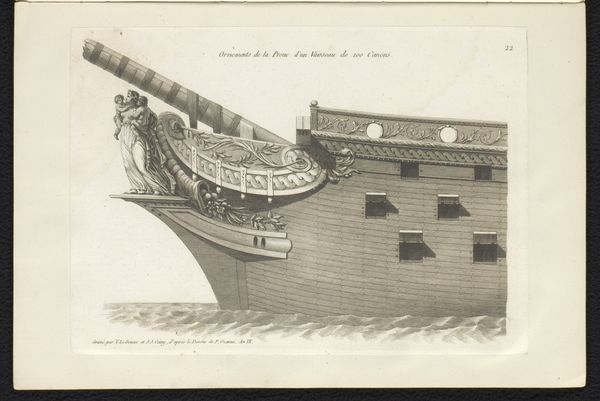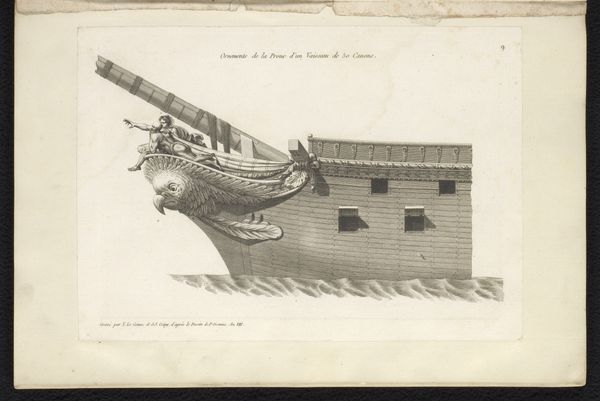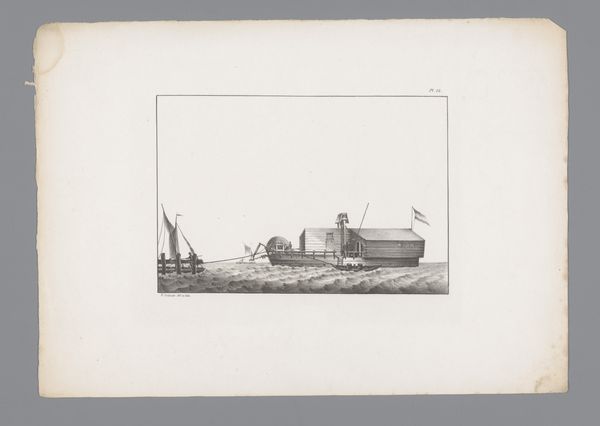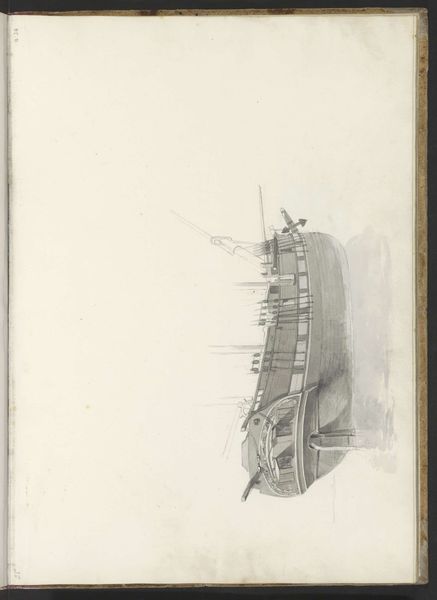
drawing, print, metal, engraving
#
portrait
#
drawing
# print
#
metal
#
old engraving style
#
landscape
#
form
#
classicism
#
line
#
history-painting
#
academic-art
#
engraving
Dimensions: height 231 mm, width 205 mm
Copyright: Rijks Museum: Open Domain
Curator: Welcome. We're looking at "Twee voorstevens van korvetten," which translates to "Two Bows of Corvettes," a print by Joseph Coiny, created between 1798 and 1799. Editor: Ah, ships! Even just fragments. It’s strange—the engraving's so clean, precise, and balanced with almost identical halves, yet it fills me with a yearning for distant, briny horizons. Like a melancholic nautical postcard from a time long gone. Curator: That precision is crucial to understanding the context. These weren’t just artistic renderings, but functional designs. Coiny documented naval architecture, which had immense strategic importance during that tumultuous period of revolution and empire. These details were vital for replication and advancement. Editor: I see! Blueprints with baroque flourishes. Check out the top bow, with what appears to be a winged predator, maybe an eagle, fixed with that cute dog-like creature cowering over the cannon's barrel as the figurehead. The lines are gorgeous; academic yet playful. What a fascinating collision. Curator: Precisely. It showcases how the state used art to glorify military power. Notice how the bottom example replaces the eagle with a sphinx motif and putti figures. These iconographic choices reinforced both the ship's and, by extension, the nation’s prestige. The transition is quite calculated and, in some ways, echoes shifts in political ideology at the time. Editor: Prestige achieved through cherubs and mythical beasts! But does that glorify the endeavor, or slightly satirize the militaristic grandeur by adorning weapons with chubby toddlers? It strikes me that those cannons are pretty impractical too… I guess it also served as social validation that military are elegant as well as aggressive. Curator: That is an interesting question, indeed. I suppose one could read both as potential responses—celebration and, perhaps subconsciously, critique. Editor: And perhaps the appeal stems from the image as a testament to human ingenuity. To try to control our environment and sail off to faraway, exotic places. The ships were, back then, more than vessels, they were cultural statements! It just evokes longing to explore. Well, thanks, Joe! I like these old boats more every day. Curator: A fascinating glimpse into how artistry, engineering, and politics intersected in the late 18th century. A worthy contemplation.
Comments
No comments
Be the first to comment and join the conversation on the ultimate creative platform.
